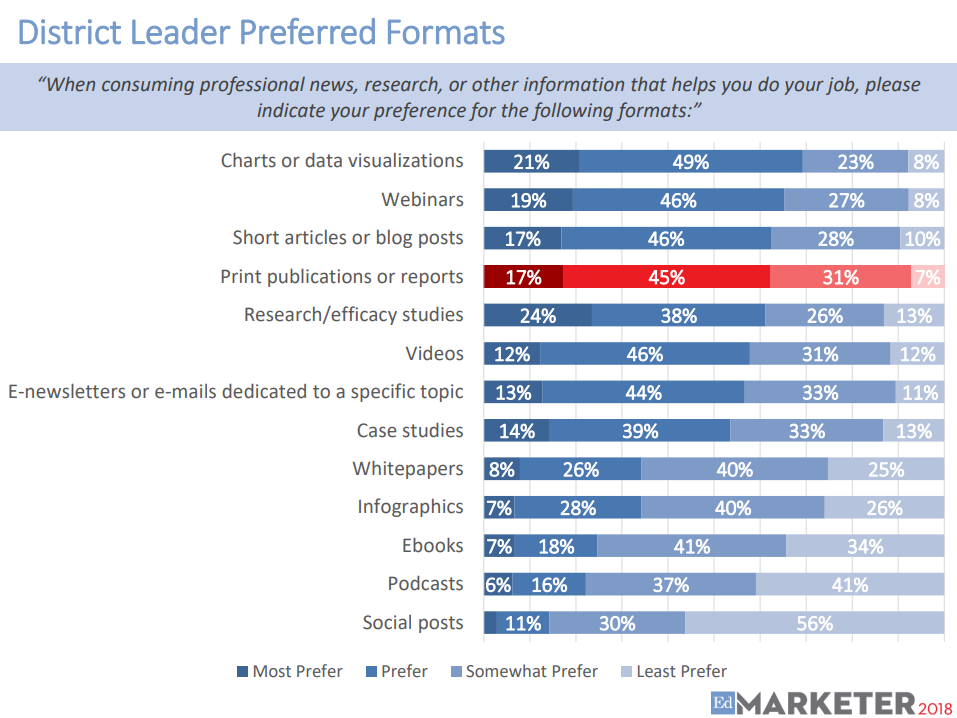3 Myths in Publishing About Engaging Your Audience
Last updated: July 17, 2023

Trends can often lead to over-exaggerations and absolute statements, which can transform into myths in an industry. For the publishing industry this holds true, with many myths being present. Although they may vary in level of importance and seriousness, these misunderstood or false statements constantly pop up and can scare marketers from using a tactic, tool or solution that can benefit them. Three of these myths come to mind as those that marketers in publishing should be weary of in order to not affect their functionality and potentially limit opportunities for audience engagement.
1. Anyone Can Run Our Social Media Accounts
Currently, one-third of all Americans say that social media is where they learn about new products and services. For Millennials, social media is second to television as a way to be introduced to and learn about new products.
Publishing companies love to think that anyone can run social media. Is it possible? Maybe. However, thinking that anyone can run your social media accounts/strategy is equivalent to saying anyone can be an editor.
Master subscription models: 9 Proven tactics to skyrocket retention & revenue:
A social media manager is a position that is not used enough within publishing companies and should be one that is added to the staff immediately – not just as an intern, but as a full-time employee.
There are a vast array of responsibilities that fall under social media management. Having a designated person running these tasks is helpful so that the rest of the team can focus on their own goals and objectives:
- Managing the online community
- Creating posts/content
- Repurposing content
- Understanding SEO and search terms
- Brand Awareness
- Looking for thought leadership opportunities/partnerships
Social media is an ever-developing landscape. These platforms can be hot one day and gone the next. An social media manager should have a strong understanding on both the history and the future of social media in order to anticipate flashes in the social media pan and forecast new trends.
2. No One Reads Print
Anyone who is in publishing has heard or read many times something along the lines of “No one reads print.” or “Print is dead.” Despite popular belief, the fact of the matter is that people still read print magazines. Audiences enjoy engaging with physical publications and reports.

Above are the results of a survey that Education Week performed in 2018 that shows of the 14 content tactics they use to send out information to their audience, print is #4 on the list of preferred formats when consuming professional news, research or other information that helps them do their jobs. Talk about a great conversation starter with potential customers!
Freeport Press created another study that was seeking information on how magazine readers engage with their magazines for both digital and print. With 1,141 respondents, they found that readers read longer and subscribe more often to print rather than digital publications. The study stated: “It appears more people are engaged with their print magazines than their digital ones.” Another interesting result was how little magazines are “followed” via social media. Not that content isn’t found in feeds, but that many respondents indicated they are not directly following magazine sources via social media.
Side note: Remember the first myth – how publishers do not truly embrace a social media role as a full-time employee? The Freeport Press report shows us the opportunity publishers have to grow their brand and engage better with an audience on social media.
FOLIO: senior editor, Greg Dool, wrote an article and spoke with a few publishers that decided to launch new print products in 2019 including a new golf magazine, Pivot. The director of marketing for Pivot, Scot Gorly, brought up the idea that the value of having a print magazine isn’t necessarily going to be a revenue generator and that’s okay. He stated, “A magazine seemed like the perfect format to introduce Pivot to the world and tell stories in a way that we knew would have a really cool style and aesthetic that was distinct from a lot of other golf media properties.” Pivot isn’t meant to be a direct revenue source, but rather a more indirect component to Callaway’s broader marketing mix, which ranges from traditional advertising to social media, podcasts and video.
3. Virtual Events Are so 2008
Virtual events can come in a variety of formats – from virtual conferences and virtual summit to online hubs, virtual universities, etc. For this post, virtual events are those of a larger scale. Webinars, eLearnings and other smaller models are not part of the conversation.
Why do publishers shutter at the two words “virtual event?”. The simple answer – it reminds them of two other words: “virtual tradeshow.”
In an article from FOLIO:, longtime expert and CEO of the virtual event platform 6Connex, Michael Nelson, brought up some great points. “Virtual events were introduced too early to the game, and people weren’t ready to move away from traditional events. Brands kept approaching a virtual event as a physical event, rather than a digital one. The big mistake was people trying to do this one-to-one comparison with live, in-person events.”
Publishers associate any virtual event with potentially replacing one of their in-person events, which is not the point of virtual events at all. Nothing can replace the engagement a publisher (and their clients) get from in-person events. A virtual event is a great way to contribute and support the in-person event’s portfolio and give the in-person event a presence year round.
Take ON24 for example – they have the ability to create an engagement hub that can be used on-demand, 24/7, 365 days of the year. This allows an audience to engage with their publishers whenever it is convenient for them. There is no waiting for a live start time or worrying if content will not be available on-demand.
A virtual event, conference or summit allows publishers to engage prospects and customers with content they can binge on. These events give publishers the ability to not only engage with their audience in a new way, but generate a new line of revenue as well by allowing customers to sponsor different areas or host some of their content as well within the virtual space.
Overall, there are always going to be cultural norms and generalizations that appear in any market, the publishing industry included. At the end of the day, publishers have to realize that each company and brand is going to have different ways to operate and maximize efficiency to find success. Make sure to keep this in mind and not take any trends too seriously while trying to stay up-to-date on the latest trends.
Photo by Clem Onojeghuo on Unsplash
Subscribe to our newsletter
Sign up to get our latest articles sent directly to your inbox.
What you should do now
- Schedule a Demo to see how Omeda can help your team.
- Read more Marketing Technology articles in our blog.
- If you know someone who’d enjoy this article, share it with them via Facebook, Twitter, LinkedIn, or email.